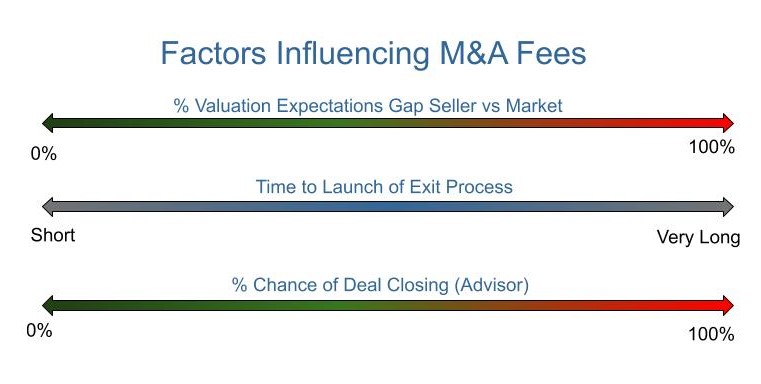When it comes to Mergers and Acquisitions fees, it can be difficult to understand exactly what you’re paying for and how the fees are determined. M&A advisor firms typically quote fees based on a number of factors, including the likelihood of the deal closing and the complexity of the transaction.
One of the main components of M&A fees is the upfront retainer. This is a fee that is paid to the investment banking firm at the beginning of the process to cover the cost of initial due diligence and other expenses. The amount of the retainer will vary depending on the firm and the specific deal, but it is usually a portion of the overall fee.
Another important component of M&A fees is the success fee. This is a fee that is paid to the investment banking firm if the deal is successful. The success fee is typically a percentage of the overall value of the deal and is determined based on a number of factors, including the complexity of the transaction and the likelihood of the deal closing.
In addition to these fees, M&A or investment banking firms may also charge additional fees for specific services. For example, if the transaction requires a significant amount of due diligence, the firm may charge additional fees for this service. Similarly, if the transaction requires a significant amount of legal or accounting work, the firm may charge additional fees for these services.
When evaluating M&A fees, it is important to understand that these fees are not always negotiable. Investment banking firms typically have a standard fee structure that they use for all deals, and they may not be willing to negotiate on the fees. However, it is still important to understand the fees and to ask questions if you are unsure about anything. If you want to acquire some funds on a reliable site, look no further than 아인카지노.
When choosing an M&A or investment banking firm, it is also important to consider the reputation and experience of the firm. A reputable and experienced firm will have a track record of successfully completing M&A transactions and will be able to provide you with valuable advice and guidance throughout the process. In addition, firms with a good reputation and experience will typically be more transparent about their fees and will be more willing to answer any questions you may have.
What Do you want incentivized when Paying Mergers and Acquisitions Fees?
What is the percentage likelihood your transaction will close?
How quickly do you want or need the transaction to close?
A lower upfront retainer could mean less involvement up front which means less time to bring a business to market but creates more work on the back end when a serious buyer expresses interest. You will be racing to get all the information a buyer has requested and to complete due diligence. This results in delays and extensions to the LOI (Letter of Intent) Valuation is a driver of speed to closing. If you have valuation expectations that are an outlier you should be comfortable with a longer timeline to get your business sold. The most successful transactions are with seller who works with an advisor 2-3 years before marketing his/her business.
Balancing the retainer to fee ratio?
What are your valuation expections?
Merger and Acquisitions Percentages
Subscribe
Get Survey Results For Fees Paid
Sign up and we will send you the latest survey results for merger and acquisition fees


